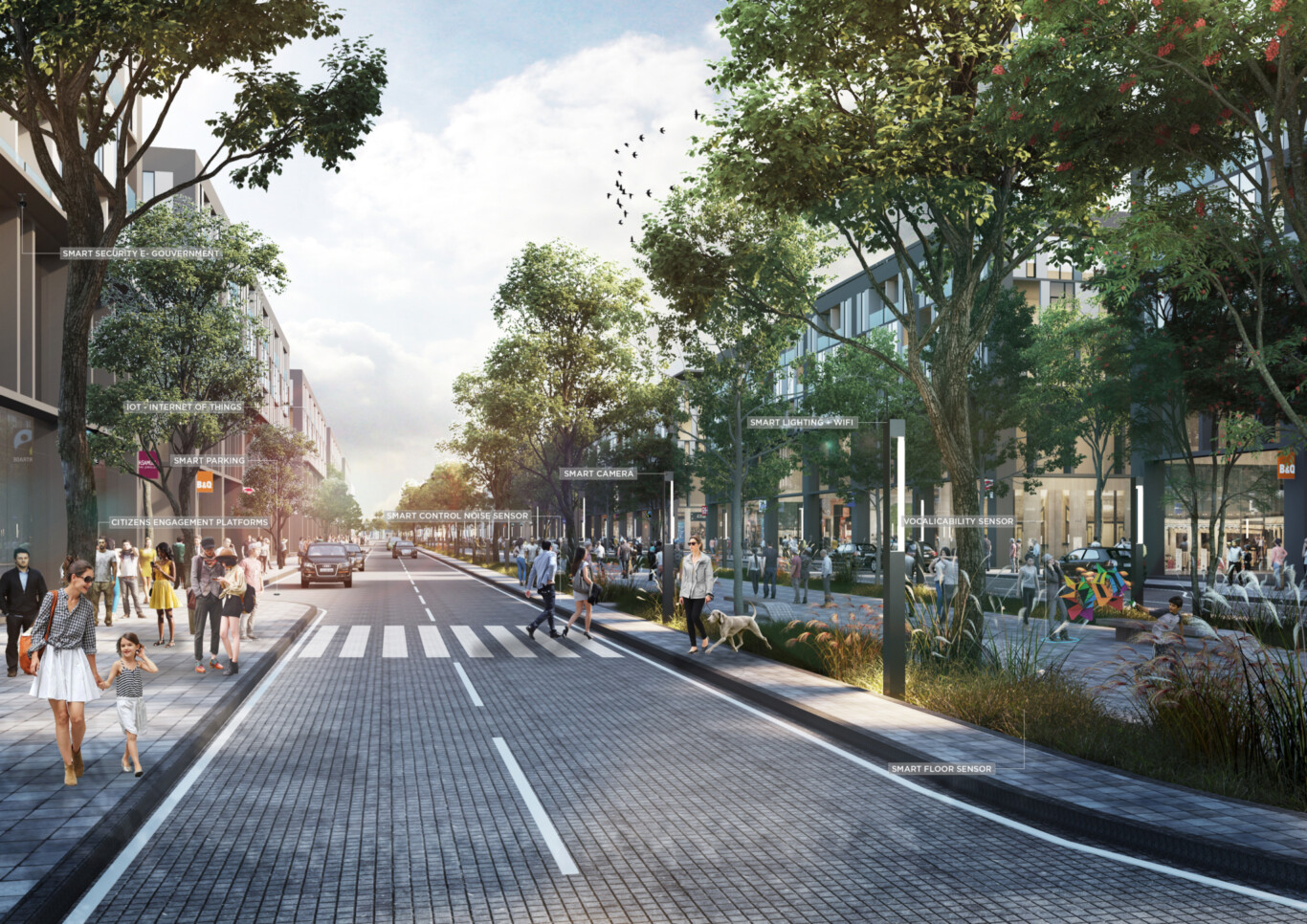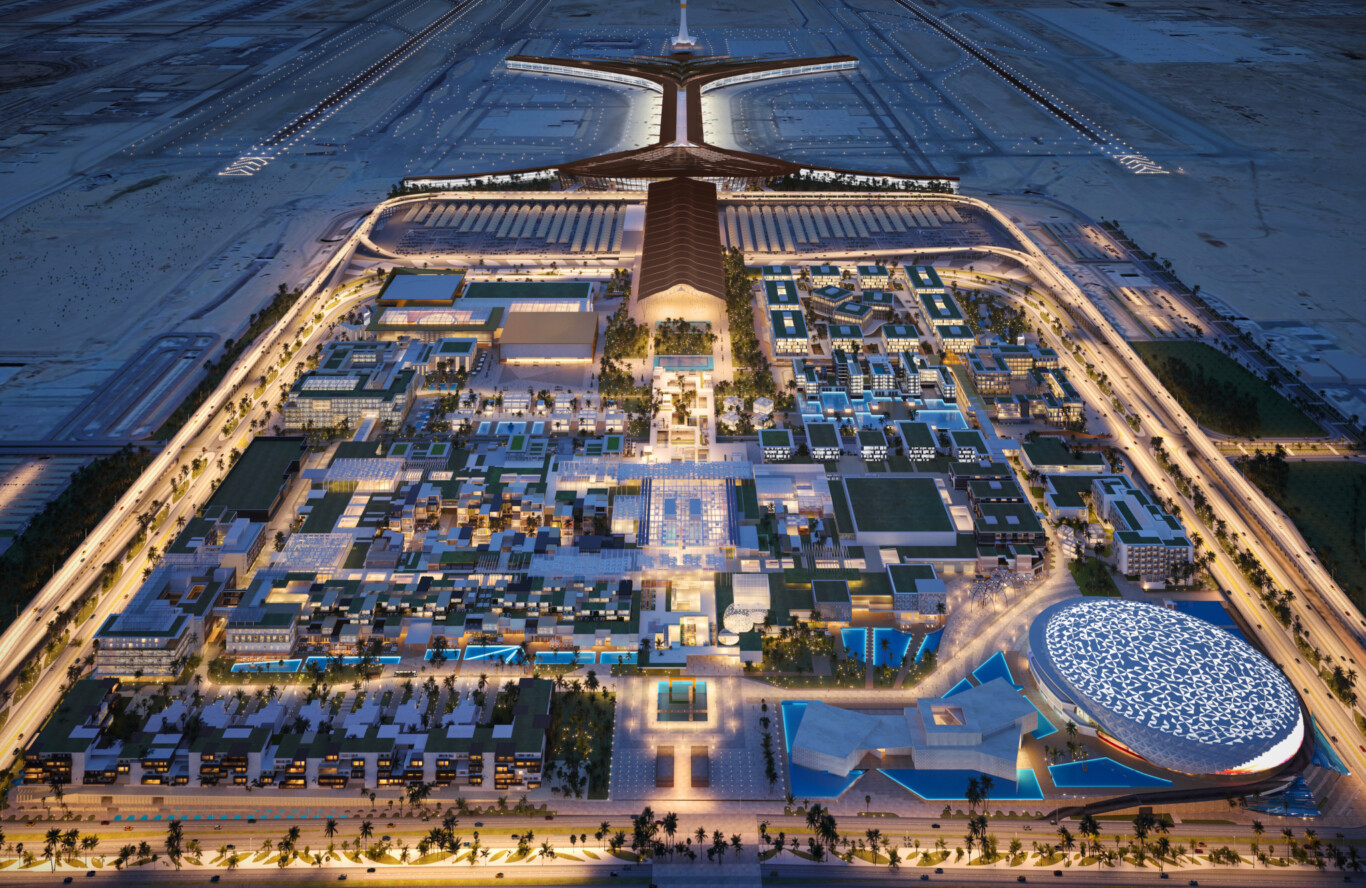
Smart Cities and the future of urban design
Smart Cities y el futuro del diseño urbano
Antonio Aguilar and Chanipa Prommuangdee, from our Bangkok studio, have written an Insight paper in which they discuss the crucial elements of a successful smart city design and lessons learned from Chapman Taylor’s work on smart cities in several locations across Asia.
The benefits of smart cities
Smart city projects range widely in scale, from a building complex or a residential street to a mixed-use urban district or an entire town or city, as long as the development in question is using data and technology to continually monitor and adjust its own functioning in response to requirements. Within a matter of years, it will be the norm for buildings and districts to be ‘smart’, using technology and very detailed planning to create built environments which are self-monitoring, self-configuring, self-diagnosing and self-correcting. Smart systems allow us to predict future needs, save energy, anticipate, identify and prevent problems, improve operational efficiency, create new means of interaction between the built environment and its users and optimise how users experience that environment.
Smart technology has also proved to be of crucial help in the COVID-19 epidemic, with mobile devices enabling swift movement tracking following someone’s diagnosis; other people can then be traced and tested if they came into contact with the person in question, potentially inhibiting opportunities for further transmission of the virus.
Our expertise
As well as masterplanning smart city developments of widely varying types, Chapman Taylor, in collaboration with other consultants, has been advising clients about what technology is appropriate for their specific circumstances, using our experience and knowledge of the market to guide clients through what can seem like a labyrinth of options.
We never approach any project with preconceptions or ready-made solutions, and that applies to smart cities too. We always ask ourselves what the problems need to be solved in that particular place and what we want to achieve there. Throwing a lot of technology at a project just because it worked elsewhere is no use if it is not serving the fundamental needs of that place and its people.
We have adopted this crucial approach on our current design for a 500,000m2 GFA mixed-use smart city district in a Vietnamese city, where our starting point was to examine what problems were being faced by people in the area on a daily basis and to figure out how we could help.
We followed the same process with a 1,800,000m2 GFA mixed-use smart city design we are creating for Thailand, and are currently doing so on another smart city development in the same city for which we are now in the research stages – a 2,000,000m2 GFA mixed-use urban district with major civic and cultural components.
We are also working on an important transport-orientated smart city development in another Thai city, which will begin construction next year, and two more smart city designs are currently in progress for India.
In South East Asia, there is now a strong push by governments to develop smart cities, with the use of tax incentives and other measures to encourage the creation of many new smart districts in the coming decade. Chapman Taylor is already at the forefront of this expansion and will continue to promote the benefits of smart city design, both in South East Asia and throughout the rest of the world.
To read more from Chanipa and Antonio about smart city design and the future direction of the sector, you can find their Insight paper here.
Antonio Aguilar y Chanipa Prommuangdee, de nuestro estudio de Bangkok, han escrito un documento “Insight” en el que discuten y analizan varios elementos cruciales para el diseño correcto para las ciudades inteligentes a través de las lecciones aprendidas en la experiencia de Chapman Taylor en distintos lugares de Asia.
Los beneficios de las ciudades inteligentes
Los proyectos de conforman ciudades inteligentes o “Smart Cities” varían ampliamente en escala, desde un complejo de edificios o una calle residencial hasta un distrito urbano de uso mixto o un pueblo o ciudad entera, siempre que el desarrollo en cuestión use datos y tecnología para monitorear y ajustar continuamente su propio funcionamiento en respuesta a los requisitos. En cuestión de años será norma que los edificios y distritos sean "inteligentes" utilizando tecnología y una planificación muy detallada para crear entornos construidos que sean autocontrolados, autoconfigurables, autodiagnósticos y autocorregibles. Un complejo y eficiente sistema de monitoreo constante nos permiten predecir necesidades futuras, ahorrar energía, anticipar, identificar y prevenir problemas, mejorar la eficiencia operativa, crear nuevos medios de interacción entre el entorno construido y sus usuarios así como optimizar el modo en que los habitantes disfrutan de esos espacios.
La tecnología también ha demostrado ser de gran ayuda en la epidemia de COVID-19 con dispositivos móviles que permiten un rápido seguimiento del movimiento a través del monitoreo del diagnóstico de alguien para posteriormente rastrear y evaluar a otras personas si entran en contacto con la persona en cuestión, lo que potencialmente inhibe las oportunidades para una mayor transmisión del virus.
Our expertise
As well as masterplanning smart city developments of widely varying types, Chapman Taylor, in collaboration with other consultants, has been advising clients about what technology is appropriate for their specific circumstances, using our experience and knowledge of the market to guide clients through what can seem like a labyrinth of options.
We never approach any project with preconceptions or ready-made solutions, and that applies to smart cities too. We always ask ourselves what the problems need to be solved in that particular place and what we want to achieve there. Throwing a lot of technology at a project just because it worked elsewhere is no use if it is not serving the fundamental needs of that place and its people.
We have adopted this crucial approach on our current design for a 500,000m2 GFA mixed-use smart city district in a Vietnamese city, where our starting point was to examine what problems were being faced by people in the area on a daily basis and to figure out how we could help.
We followed the same process with a 1,800,000m2 GFA mixed-use smart city design we are creating for Thailand, and are currently doing so on another smart city development in the same city for which we are now in the research stages – a 2,000,000m2 GFA mixed-use urban district with major civic and cultural components.
We are also working on an important transport-orientated smart city development in another Thai city, which will begin construction next year, and two more smart city designs are currently in progress for India.
In South East Asia, there is now a strong push by governments to develop smart cities, with the use of tax incentives and other measures to encourage the creation of many new smart districts in the coming decade. Chapman Taylor is already at the forefront of this expansion and will continue to promote the benefits of smart city design, both in South East Asia and throughout the rest of the world.
To read more from Chanipa and Antonio about smart city design and the future direction of the sector, you can find their Insight paper here.
Chapman Taylor Urbanistas, nuestra experiencia
Además de diseñar y planificar los desarrollos de ciudades inteligentes de diferentes tipos, Chapman Taylor, en colaboración con otros consultores, ha estado asesorando a los clientes sobre qué tecnología es apropiada para sus circunstancias específicas utilizando nuestra experiencia y conocimiento del mercado inmobiliario para guiar a los clientes a través de lo que puede parecer como un laberinto de opciones.
Nunca abordamos ningún proyecto con ideas preconcebidas o soluciones de uso inmediato y eso también se aplica a la hora de analizar los componentes urbanos de las ciudades inteligentes. Siempre nos preguntamos qué problemas deben resolverse en ese lugar en particular y qué queremos lograr allí. Problemas y objetivos. Lanzar una gran cantidad de tecnología en un proyecto solo porque funcionó en otro lugar no sirve de nada si no satisface las necesidades fundamentales de ese lugar y de su gente. Se torna vital aquí el conocimiento y respeto del entorno urbano y la tradición local e histórica de sus habitantes.
Hemos adoptado este enfoque crucial en nuestro diseño actual para un distrito de ciudad inteligente de uso mixto de 500,000m2 GLA en una ciudad vietnamita, donde nuestro punto de partida fue examinar a diario los problemas que enfrentaban las personas en el área y determinar el “¿Cómo podemos ayudar a solucionar problemas urbanos e innovar en una sociedad mejor?
Seguimos el mismo proceso con un diseño de ciudad inteligente de uso mixto de 1,800,000m2 GLA que estamos creando para Tailandia, y actualmente lo estamos haciendo en otro desarrollo de ciudad inteligente en la misma ciudad para la que ahora estamos en las etapas de investigación: un GLA de 2,000,000m2 distrito urbano de uso mixto con importantes componentes cívicos y culturales.
También estamos trabajando en un importante desarrollo de ciudad inteligente orientada al transporte en otra ciudad tailandesa, que comenzará a construirse el próximo año, y actualmente hay dos diseños más de ciudades inteligentes en curso para India.
En el sudeste asiático, ahora hay un fuerte impulso por parte de los gobiernos para desarrollar ciudades inteligentes, con el uso de incentivos fiscales y otras medidas para alentar la creación de muchos nuevos distritos inteligentes en la próxima década. Chapman Taylor ya está a la vanguardia de esta expansión y continuará promoviendo los beneficios del diseño de ciudades inteligentes, tanto en el sudeste asiático como en todo el resto del mundo. Para leer más de Chanipa y Antonio sobre el diseño de ciudades inteligentes y la dirección futura del sector, puede encontrar su documento Insight aquí.
